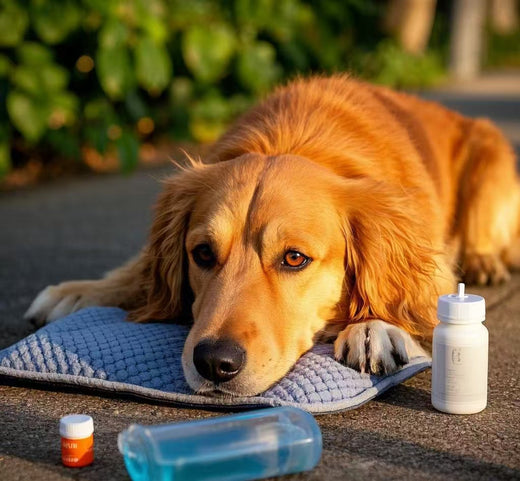Caninedistempervirus is a highly contagious and fatal infectious disease in dogs and mustelids caused by the canine distemper virus. The main clinical features are biphasic fever, acute nasal catarrh, bronchitis, catarrhal pneumonia and other respiratory tract inflammations.
This disease can occur in different genders, ages and breeds. Although the disease can occur throughout the year, it is more common in the cold seasons of winter and spring. The disease is mainly caused by direct contact between susceptible dogs and sick or virus-carrying dogs, or through contaminated air or food. The virus invades the body through the respiratory tract or digestive tract. As long as healthy dogs are weak, they can become infected. Once the disease develops, the righteousness becomes even weaker, further causing secondary bacterial infections. In recent years, it has become clear that in addition to secondary bacterial infections such as Escherichia coli, Staphylococcus aureus, Streptococcus aureus, Salmonella, Bordetella bronchiseptica, and Nocardia asteriosa, it is also often mixed with canine infectious hepatitis. At the beginning of the disease, it first causes fever, then damages the spleen and lungs, and finally poisons the blood and endangers the whole body.
[Main Evidence] The incubation period is 2 to 3 weeks. At the beginning of the disease, the body temperature rises to more than 40°C, the patient is depressed, the coat is rough and stiff, he eats little and is inactive, prefers cold drinks, has a dry nose, runny nose, often mucopurulent, sticky saliva at the mouth, and a large amount of yellow purulent eyelids in the corners of the eyes. open eyes. The lips are red and the pulse is rapid. If the disease progresses further, asthma and cough due to lung heat may be the main symptom, or vomiting and dysentery may be the main problem. The former presents with cough, shortness of breath, rough breath sounds on lung auscultation, and moist rales; waste of food, dry feces, oliguria, weakness, and weight loss; dark tongue, thready and rapid pulse. The latter experienced frequent vomiting, mostly sticky saliva, and was unable to eat; there was tenderness in the abdomen, foul-smelling, and dark red bloody stools. In the final stage of the disease, due to the poison entering the blood, the liver wind moves internally, causing paroxysmal muscle spasms, ataxia, convulsions, coma, and sometimes paralysis of the hind limbs. Death usually occurs shortly after the onset of convulsive symptoms.
[Treatment] Timely use of comprehensive therapy can make some dogs with canine distemper recover. The principle of treatment for sick dogs is emergency injection of canine distemper monoclonal antibody or hyperimmune serum to prevent secondary infection, combined with comprehensive measures such as symptomatic and supportive therapy.
Traditional Chinese medicine treatment can use traditional Chinese medicine preparations that clear away heat and detoxify, such as Qingkailing, Shuanghuanglian, etc. You can also use 9g each of honeysuckle, forsythia, and licorice, 6g each of skullcap and kudzu root, 12g each of hawthorn and yam, decoct them in water and take them warmly. When cough and asthma occur due to lung heat, you can use 30g each of Anemarrhena, Fritillaria, paeonol, Radix Rehmanniae, Platycodon, Pinellia, and Atractylodes, 20g each of Gentian, Artemisia, tangerine peel, white peony, angelica, and licorice, decoct in water for 2 minutes. Take it once by mouth, and use cough syrup or Houttuynia cordata aerosol therapy at the same time; when symptoms of internal movement of liver wind occur, most of them have a poor prognosis and are difficult to treat.
[Prevention] Regular vaccination, immunize with attenuated canine distemper vaccine 3 times, respectively at 6, 8, and 10 weeks of age, and once a year thereafter. To strengthen veterinary epidemic prevention measures, each dog breeding farm should try to breed and raise its own dogs. When breeding dogs need to be introduced, they should be isolated for observation and vaccinated. Do a good job in disinfection and sanitation of the kennel.

